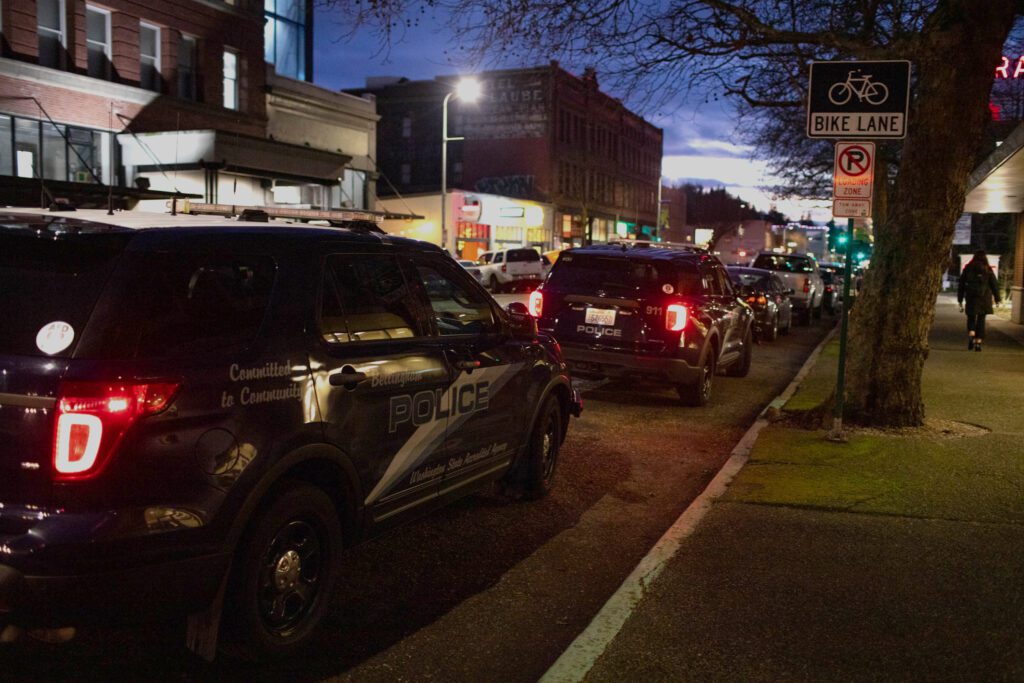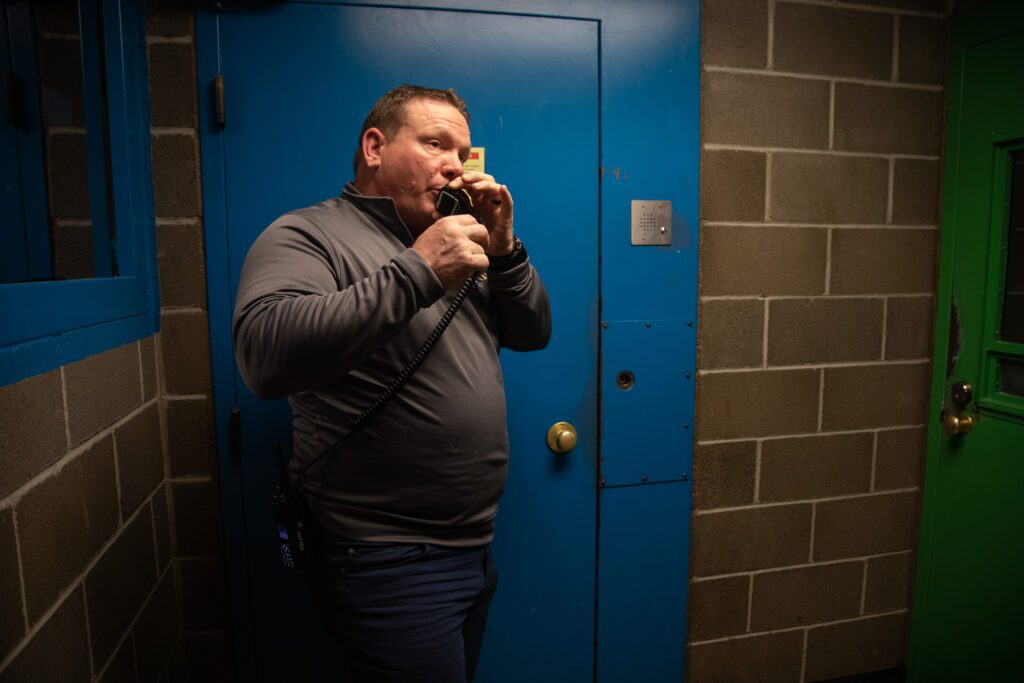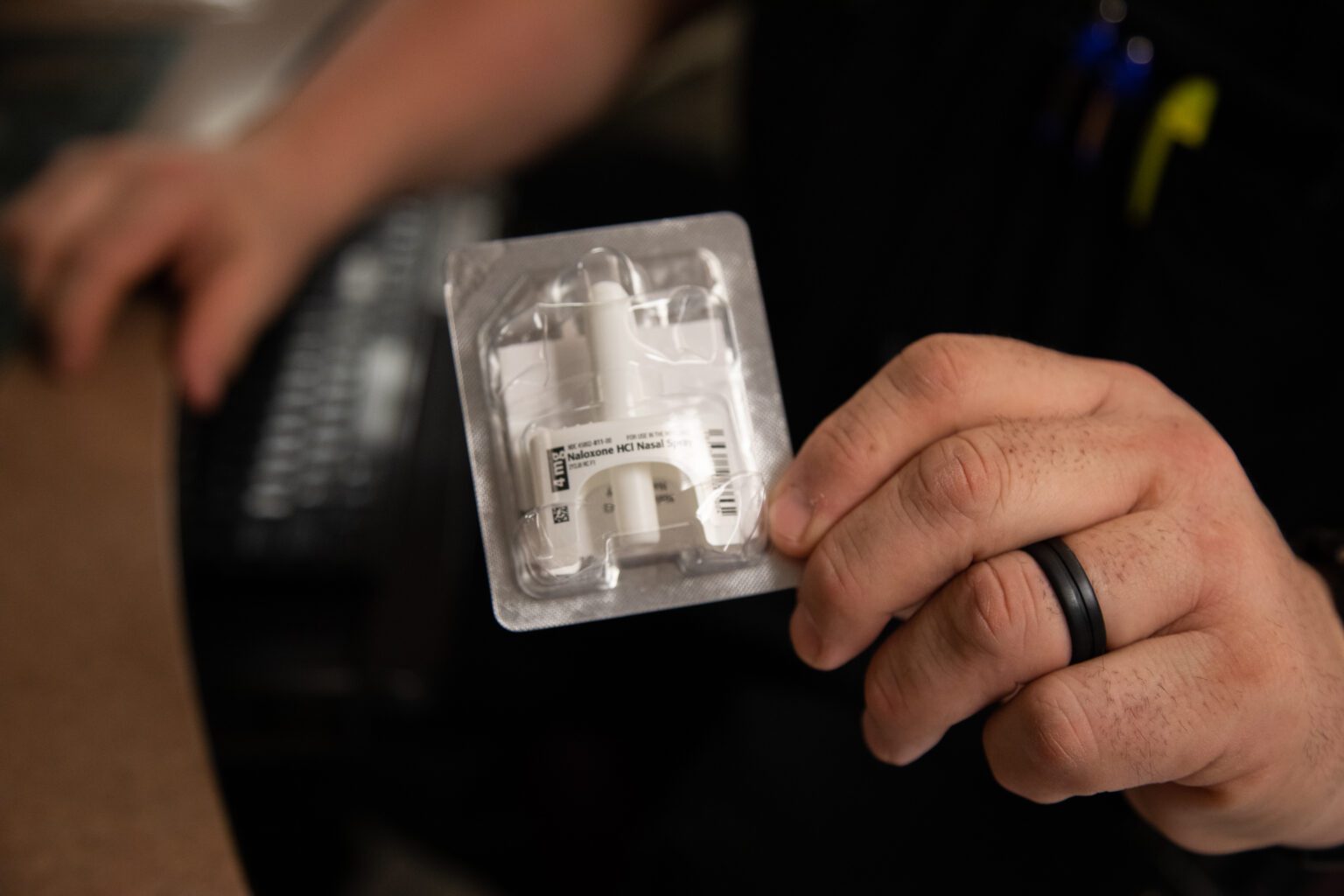Editor’s Note: Beyond Bars: The future of justice in Whatcom County is a special report that explores the county’s controversial effort to build a new jail. Voters on recent jail bond measures made it clear they won’t accept a new jail without better social services for the people who wind up behind bars. This week, we take a closer look at three social ills that contribute to incarceration: homelessness, serious mental illness and substance use disorder.
“The big three.”
It’s a shorthand phrase used by those who work in behavioral health to refer to some of the worst social ills: homelessness, mental illness and substance use disorder.
All three have only gotten bigger in recent years, and they are making a greater impact on Whatcom County’s already overburdened jail. County leaders planning a November ballot measure for construction of a new jail intend to address these problems head-on. Whatcom voters have proven fickle, however, having defeated two other jail levies since 2015.
Social Problems
By the official count and by all accounts, homelessness is on the rise in Whatcom County. The annual Point-in-Time count showed a 69% increase in people experiencing homelessness from 2012 to 2022.
The 2023 Point-in-Time report is still being compiled, but county health officials told the County Council March 7 that it will show homelessness continues to trend upward.
The county expects to spend more than $13 million this year on services to support housing and reduce homelessness, but it won’t be enough.
“Our ability to provide services is falling short of the community demand for those services,” county Housing Supervisor Chris D’Onofrio said March 7.

Statistics aren’t always as revealing as personal anecdotes. Peter Frazier, co-owner of Heliotrope Hotel and Hotel Leo in downtown Bellingham, told the story of a woman he got to know on the streets — someone who grew up in Whatcom County and, until recently, had a “relatively normal life” before she was overcome by her mental illness.
“She is in crisis continually and creates chaos wherever she goes,” Frazier said at a forum on public safety hosted by the Downtown Bellingham Partnership and the Bellingham Regional Chamber of Commerce in September 2022.
“She was living in her own excrement, vulnerable every night,” Frazier said. “I really wondered why it was that we as a community could not help her and take better care of her.”

The county’s drug problem is just as visible. Fentanyl users smoke openly on Bellingham’s streets, usually pulling a blanket over their head to trap the vapors.
Fentanyl overdose deaths are rising exponentially: 15 in Whatcom in 2020 and 25 in 2021, according to a state Department of Health dashboard; and at least 48 in 2022, county Medical Examiner Allison Hunt said on Feb. 27.
The fentanyl problem even got inside Whatcom County’s jail. An inmate is accused of sneaking packets of fentanyl in his rectum on the morning of Feb. 7. Less than two hours later, inmates in a bunk room started collapsing. Corrections officers administered Narcan, the life-saving anti-opioid, and four inmates were taken to the hospital and treated for fentanyl overdose.
Many people experiencing homelessness, mental illness or substance use disorder are out of sight, locked up in the county jail. Homelessness and drug addiction fuel desperation that leads to theft and other crimes. The “chaos” of mental illness can become vandalism or violence.
Personal Safety
The perception at public forums and on social media is that crime is on the rise. Community members who express concerns over their own personal safety also tend to point to certain reasons for their perception, among them Bellingham Police Department’s officer shortage, a new law that decriminalized drug possession and a county jail that’s too small, leaving more offenders on the street.
Crime statistics back up this perception somewhat. The crime rate rose 9.1% in Bellingham from 2020 to 2021, according to the latest Washington Association of Sheriffs and Police Chiefs Crime in Washington annual report. A review of non-traffic crimes listed on the City of Bellingham’s crime statistics webpage shows a bigger jump in 2022: up 39% compared to 2021.

Many crimes in Bellingham, however, declined sharply in the second half of 2022 compared to the first. Auto thefts dropped 30% in the second half of the year, and vehicle prowls declined 44%.
The Whatcom County Sheriff’s Office responded to 19.8% fewer crimes in 2021 compared to 2020, according to WASPC. The state association hasn’t reported numbers for 2022 yet, but crimes listed on the sheriff’s office dashboard declined another 8% in the 12-month period ending February 2023, compared to the prior 12 months.
Real or perceived, the crime spike has a simple solution, a vocal segment of the community says: Build a bigger jail.
“The county and the government at every level are spending huge sums of money on homelessness, drug and alcohol abuse, mental illness,” county resident Sarah Rose said at a jail planning forum on Nov. 15, 2022. “If providing treatment for the underlying causes of criminal behavior was all we needed to prevent crime, we would see that crime would be disappearing, not escalating … The best way to prevent incarceration is for potential criminals to know that there will be consequences to their actions.”
Studies show, however, that potential criminals aren’t deterred by the threat of lockup. A community does better if it addresses the problems that lead to crime.
“I don’t think you can pick one side,” said Maialisa Vanyo, chief deputy at the county public defender’s office. “You are going to have repeat offenders and people continuing criminal conduct if you don’t address the root causes of criminal activity.”
Inside the Jail
And whatever governments are spending on homelessness and behavioral health — Bellingham spent about $15 million on housing alone in 2021 — officials say it isn’t enough.
“We’re severely lacking in our community and our state in inpatient facilities, especially, and intensive outpatient opportunities,” said David Goldman, an educator with Whatcom Community College who provides instruction to inmates in Whatcom County Jail. Before COVID-19, he worked inside the jail with as many as eight students in a small classroom next to the jail’s courtroom.
“Certainly, every time I walk into the jail, I’m facing people with really extreme mental health crises going on,” Goldman said.
By the numbers
• Approximately 60% of people incarcerated in Washington state jails have substance use disorder.
•300,000 adults in Washington state have a serious mental illness.
• Nearly 23,000 people in Washington state are homeless, and approximately one in four of those people have a serious mental illness.
• The number of people needing services at Western or Eastern state hospitals increased from 996 in 2015 to 2,397 in 2022.
• In October 2022, there were 850 people in the state deemed incompetent to stand trial who were waiting for a bed at Western or Eastern state hospitals — a 142% increase from October 2021.
• Nationally, more than 2 million jail bookings a year are people with a serious mental illness. One in four people with a serious mental illness have been incarcerated at least once.
Sources: U.S. Department of Justice, National Alliance on Mental Illness, KING5
A recent census of inmates, reported in late January, showed “about 48% of the population with a diagnosis of a serious mental illness,” Corrections Chief Wendy Jones said in an email. Eight or nine years ago, that number was around 18%, Jones said.
“Approximately 80–85% of the offenders have some issues with substance abuse,” she added.
Mental illness inside the jail is severe enough in some cases that a judge will rule an inmate incompetent to stand trial on the charges that sent them to jail in the first place. Those people must be transferred to Western State Hospital, for treatment that would restore their mental health enough for them to understand what’s happening in the courtroom.
The mental hospital is over capacity, however. Inmates can wait six months for a bed at Western State. And when they return, some refuse to take their medication and revert to a condition where they can’t stand trial.
These people are stuck in jail indefinitely.
“I think our state is failing us miserably, particularly in terms of Western State Hospital and the process to determine competency to stand trial,” said Sheriff Bill Elfo, whose office runs the jail.
“It’s more dangerous for our people that work there,” Elfo added. “Not only the corrections deputies … but also to the other inmates that are in there. They’re more subject to being assaulted or intimidated.”

Homelessness is also the norm among inmates in jail. A 2022 survey by the Stakeholder Advisory Committee — the group charged with planning a new Whatcom County Jail — showed at least 73% of surveyed inmates were either homeless or couch surfing with friends or family.
“Housing is the No. 1 complaint and concern that I hear about,” Vanyo said. “There’s a lack of affordable housing in Whatcom County, and people suffer deeply because of that.”
“We need housing that people can transition to,” Vanyo added. “When people are transitioning from the jail to the street, they’re going to struggle.”
Last Resort
Local governments have taken some steps to enhance services for mental health and substance use disorder, notably the 32-bed crisis stabilization center opened in 2021 and renamed the Anne Deacon Center for Hope in January.

It hasn’t been enough. And even if the state were to add billions of dollars to its budget for housing and behavioral health services, as Gov. Jay Inslee has proposed, those investments would take time to materialize. In any case, state and local governments appear nowhere near to solving “the big three.”
For now, people in crisis will continue to land in the county jail.
“The stabilization center is one of the best things this county has done,” said Jones, the jail chief. “It has absolutely made no impact on our population at all because people have to want to go there. And the vast majority of the offenders that we see here don’t identify that they’ve got a drug or alcohol problem, or are mentally ill.”
“We are literally the last catch net, yet the first step in their mental health care,” corrections Lt. Barry Lovell said.

That should be reason enough, in Lovell’s view, for any skeptics of a new jail to consider supporting the ballot proposal this November.
“If you can build a jail that has space for these people to recover, and have access to the professionals that they need have access to, that to me is the win-win, rather than just shutting the door on this,” he said.
Reporter Jenelle Baumbach contributed to this story.
Next week: Part four examines possible solutions, both present and future, to “the big three” social ills.
Ralph Schwartz is a former CDN Local Government Reporter; send tips and information to newstips@cascadiadaily.com.




